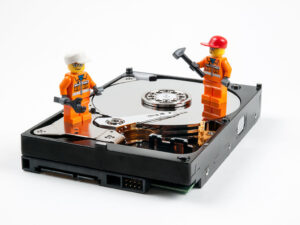 BrainBlog for Verity ES by Jason English
BrainBlog for Verity ES by Jason English
Definitively eliminating unnecessary, unneeded and unwanted data from an enterprise that generates more data exhaust every day is a much harder slog than it seems.
In this series, we’ve discussed how to overcome the operational challenges of data eradication, addressed the capacity issues of eliminating data at scale, and explained how software-based data sanitization procedures offer a safer and more efficient alternative to simple erasure or hardware destruction.
All of these techniques for reducing the risk of unwanted data exposure have been proven in the field. Now we’ve come full circle to discussing how to answer the question: “Are we there yet?”
Shredders will shred, until there’s a reason not to
If a company could eradicate data from media far more cheaply through software-based routines, while recouping equipment costs, and reducing electronic waste, they would automatically move away from shredding drives, right?
One key factor—operational risk—leads enterprises to automatically retain the wasteful practice of shredding drives as a cost of doing business.
A large enterprise may have thousands of failed, obsolescent or unused drives that come up for erasure every week, typically gathered in bins at the company’s datacenters and offices, or collected by technology partners and contractors.
The data generated by an software-driven erasure process can be overwhelming. Volumes of information can come in on the status of each drive’s eradication—perhaps through syslogs, or more likely, through an assurance via email from people who say the job is done.
There will always be a certain percentage of drives that are unresponsive to electronic eradication methods or provide uncertain indicators about the success of a deletion procedure.
As usual, the exceptions and blind spots are where operational risks lie. If a certain percentage of drives cannot be proven to be erased, they are instead slated for destruction, and lost value entails.
Read the entire BrainBlog on the VerityES blog here.
©2023 Intellyx LLC. Intellyx retains editorial control over this document, and no AI chatbots were used in writing this article. At the time of writing, Verity ES is an Intellyx client. Image source: William Warby, flickr CC2.0 license.



